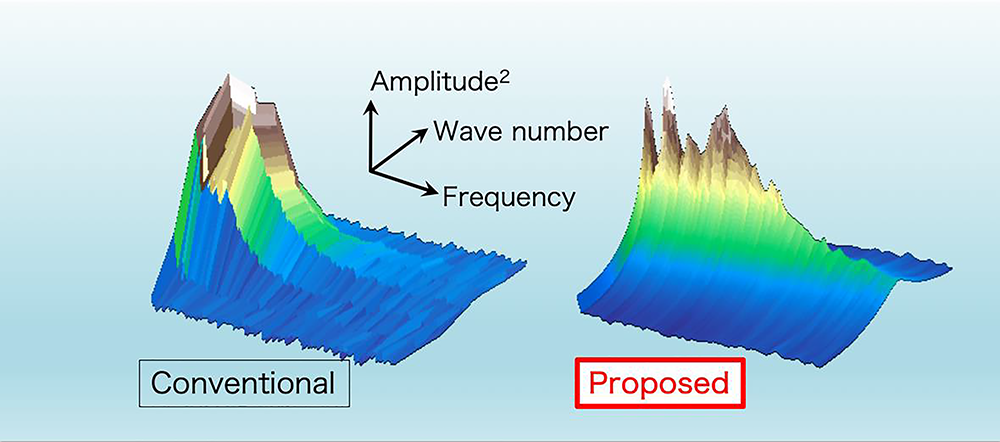Improvement of spectral resolution using maximum entropy method (MEM)
By the maximum entropy method, spectral resolution of plasma turbulence has been significantly improved. In order to sustain stable magnetically confined plasmas, it is important to characterize the spatial scale and amplitude of turbulent eddies. By applying a newly proposed method, it has become possible to obtain detailed information on turbulent eddies, which is essential for plasma turbulence modeling.

For stable sustainment of reactor plasmas, it is important to obtain a physics-based understanding of plasma dynamics. Due to the existence of a large temperature difference in the core and edge plasmas, plasma turbulence is inherently excited. This is analogous to Bernard convection in a neutral fluid. In order to analyze the physical origin of this plasma turbulence, researchers develop different kinds of turbulence imaging diagnostics. For analyzing obtained data, the Fourier analysis is frequently used. However, because of a limited number of measurement points in space, it is difficult to properly quantify the spatial spectrum by using the conventional method.
In order to resolve this difficulty, researchers have adopted a different approach, the so-called maximum entropy method. By using this procedure, data outside the measurement area can be predicted, resulting in an improved spectral resolution. As shown by the figure at the top, a better resolution of the power spectrum was successfully obtained by using the new method.
This study was performed based on a collaboration with Drs. T. Nishizawa (Max Planck Institute for Plasma Physics, Germany) and M. Sasaki (Kyushu University).
The paper was published on February 19, 2021 in Plasma Physics and Controlled Fusion, an international journal on plasma physics.
